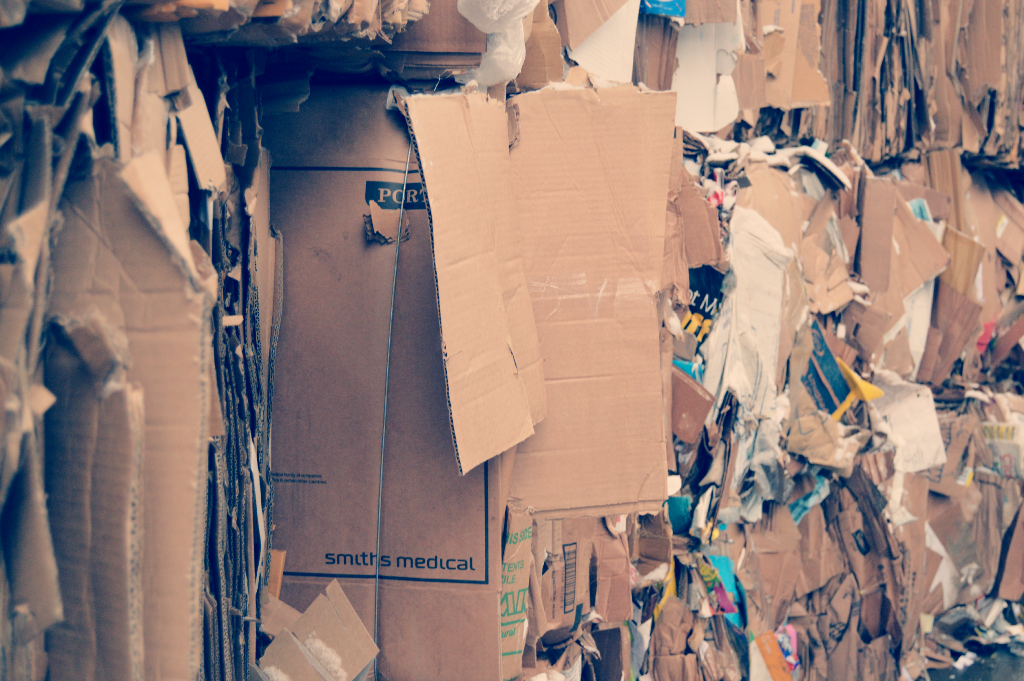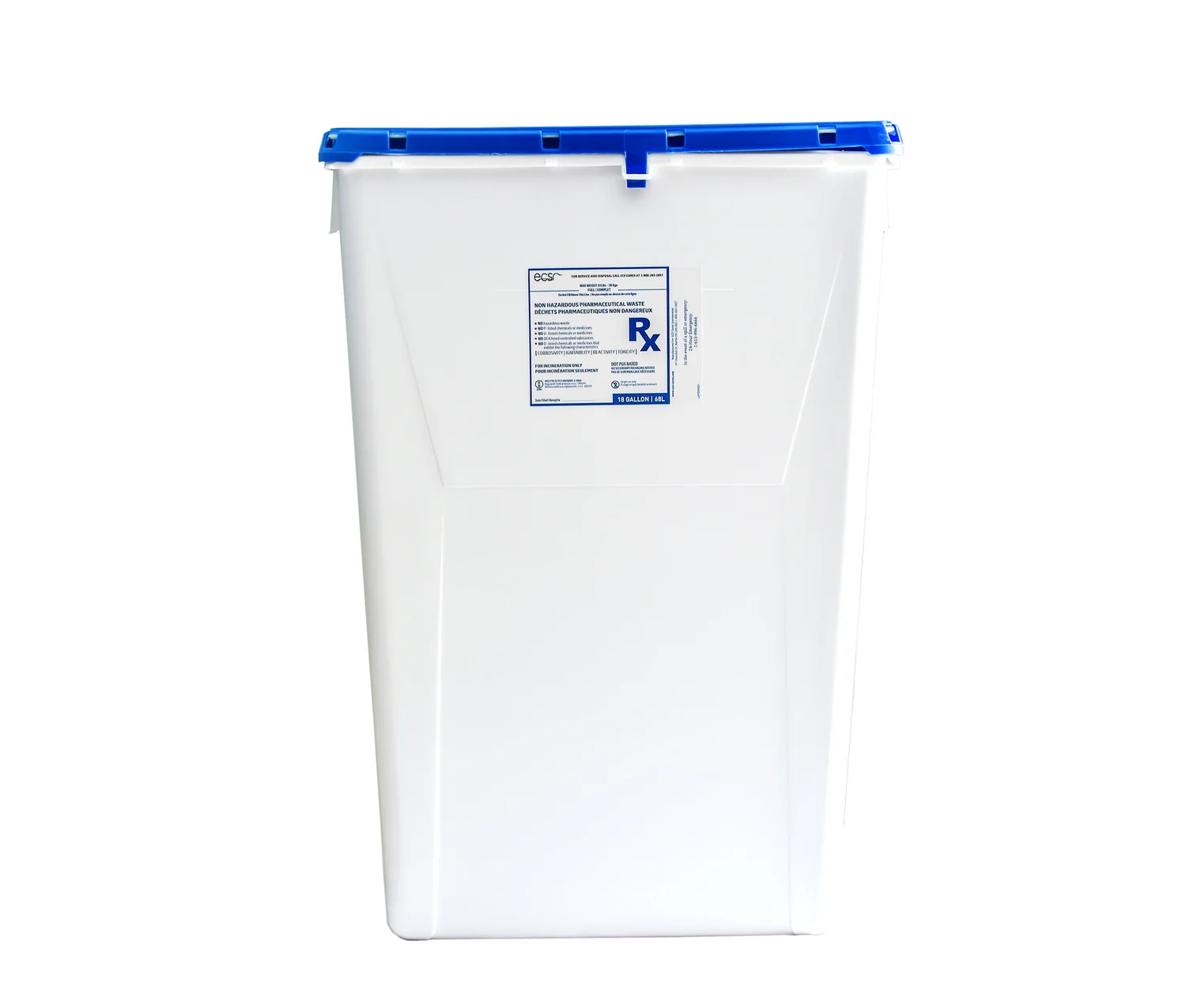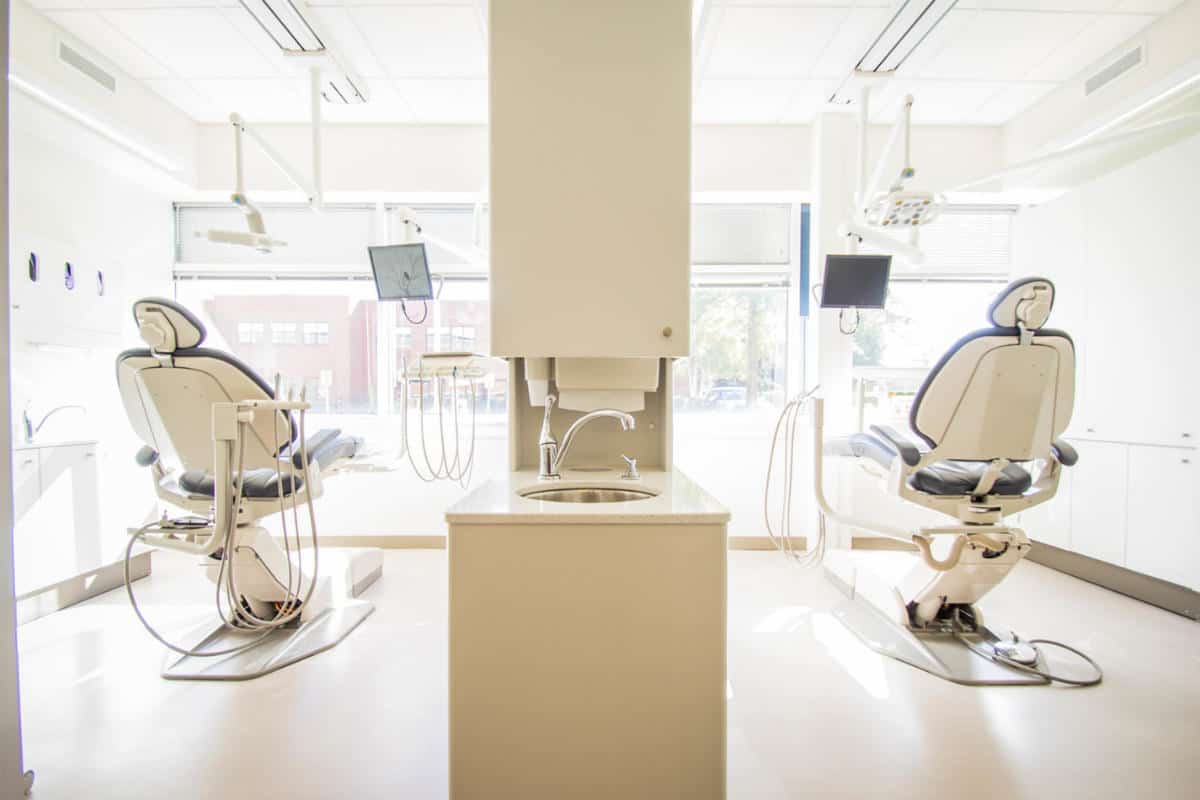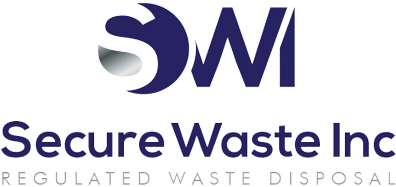Hospital Cardboard: The Global Impact
Cardboard Waste in Hospitals: How Much Is Generated and What Can Be Done About It?
Hospitals worldwide generate massive amounts of cardboard waste from daily deliveries of medical supplies, medications, food, and equipment. Healthcare facilities produce waste on a scale comparable to small towns. Studies estimate that hospitals generate over 29 pounds of total waste per bed daily, up to more than 5 million tons annually in the U.S. alone. A significant portion of this is packaging waste like corrugated cardboard. The World Health Organization (WHO) reports that about 85% of hospital waste is ordinary non-hazardous trash, and over half of that (around 54%) is paper and cardboard materials. This means cardboard boxes and paper are the most significant single component of a hospital’s waste stream – far more than plastics or sharps. Handling this “cardboard mountain” is both a challenge and an opportunity for healthcare providers worldwide. This article explores how much cardboard waste hospitals produce globally and discusses practical solutions to reduce, recycle, and better manage this waste. Hospitals can cut costs, improve sustainability, and even generate revenue from what would otherwise be trash. Finally, we highlight how partnering with specialized waste management services like Secure Waste can help hospitals achieve their recycling and waste reduction goals.
The Scope of Hospital Cardboard Waste Generation
This is a typical breakdown of a hospital’s solid waste by material, with paper and cardboard (blue) comprising the largest share at 54%. This visual representation highlights how significant cardboard waste is in healthcare facilities. Managing this dominant waste stream effectively can yield substantial environmental and cost benefits.
Hospitals are resource-intensive institutions, and the waste they produce reflects that scale. According to international data, approximately 85% of hospital waste is “general” waste comparable to regular municipal waste (the remainder is hazardous or regulated medical waste). Within that general waste, cardboard and paper are the most significant fraction, estimated at over half of all solid waste generated by hospitals. This means that for every ton of hospital waste, hundreds of kilograms are packaging materials like cardboard shipping boxes, paperboard cartons, and office paper.
To put this in perspective, consider a mid-sized hospital with 300 beds. At ~29 pounds of waste per bed per day, this facility would generate roughly 1.5 million pounds of trash in a year – over 750 tons. If about 54% of that is paper and cardboard, then over 400 tons of that single hospital’s annual waste would be cardboard and paper packaging. Extrapolated across tens of thousands of hospitals globally (ranging from large urban medical centers to small regional clinics), healthcare’s global cardboard waste footprint is enormous, running into millions of tons yearly. In high-income countries, where hospitals use vast disposable supplies, the cardboard waste is exceptionally high. But even in lower-income regions, as healthcare services expand, shipments of medicines and supplies still arrive in cardboard containers that pile up.
Cardboard waste isn’t a trivial part of hospital operations – it’s a significant waste stream that demands attention. Recognizing the sheer volume is the first step. The next step is understanding why hospitals generate so much cardboard waste in the first place and what impact this has on the environment and budgets if not appropriately managed.
Why Do Hospitals Generate So Much Cardboard Waste?
Several factors contribute to the high volume of cardboard waste in healthcare. Modern hospitals depend on vast supply chains to deliver sterile, ready-to-use products, and most of these products come packaged for protection and single-use convenience:
- Multiple Layers of Packaging: Medical and surgical supplies often arrive with three or four layers of packaging for safety and sterility—for example, an instrument may be inside a sterile wrap, a plastic pouch, or a cardboard box. Likewise, pharmaceuticals, gloves, syringes, and laboratory reagents come in cardboard shipping boxes to prevent damage. Over time, these layers accumulate into mountains of discarded cardboard.
- High Consumption of Supplies: Hospitals operate 24/7 and treat hundreds of patients, so their consumption of goods is enormous. Everything from bandages to IV bags to cleaning supplies arrives in boxes. Food services for patients and cafeterias also contribute to packaging waste, as bulk food and kitchen supplies are delivered in cardboard cartons. This constant inflow means a continuous outflow of empty boxes.
- One-Time Use and Infection Control: Many hospital items are single-use or disposable for infection control, especially in high-risk areas like operating rooms. While this improves patient safety, new items (with new packaging) are opened daily, generating waste. Even durable equipment is packaged in foam and cardboard for each delivery or repair.
- Varied Departments, Varied Needs: A large hospital is like a small city – with pharmacies, laboratories, offices, cafeterias, and more. Each department receives specialized supplies (lab reagents in boxes with ice packs, office paper shipments, etc.), all contributing to the cardboard waste stream. A study noted that hospital solid waste typically includes a lot of corrugated cardboard boxes and shipping containers, alongside other discards like food waste and linens. Essentially, the logistics of running a hospital inherently generate packaging waste at every turn.
- Lack of Supplier Take-Back Programs: Traditionally, hospitals are left to deal with the packaging once supplies are delivered. Few vendors take back the boxes or pallets they send. This means the responsibility for recycling or disposal falls entirely on the hospital’s waste system.
These factors result in healthcare facilities accumulating stacks of cardboard very quickly – visible in storage rooms, loading docks, and waste collection areas. If not dealt with efficiently, these piles can become a nuisance, consuming space and labor. More importantly, if sent to the dumpster or incinerator, all that cardboard represents a lost opportunity regarding recyclable material and cost savings. Before exploring solutions, it’s essential to recognize why failing to manage cardboard waste is problematic for the environment and hospital operations.
The Impact of Unmanaged Cardboard Waste
Discarded cardboard boxes might seem harmless – after all, cardboard is biodegradable – but throwing away large volumes of cardboard has significant environmental and economic consequences:
- Landfill and Pollution: When cardboard waste is not recycled, it typically ends up in landfills or is incinerated. Landfilling massive amounts of cardboard consumes precious landfill space and produces methane emissions as the paper decomposes anaerobically (methane is a potent greenhouse gas). On the other hand, incineration can release carbon dioxide and other pollutants. Given that paper and cardboard waste can be as much as 54% of hospital waste, failing to divert this material from landfills means healthcare facilities contribute substantially to solid waste pollution.
- Resource Waste: Cardboard is made from paper fibers (often from trees). Throwing it away means losing the chance to reclaim those fibers. Producing new corrugated cardboard requires cutting down trees, consuming water, and using energy. Every box sent to the dump instead of the recycling bin wastes energy and raw material. On the flip side, recycling cardboard significantly conserves resources – recycling just one ton can save about 17 trees and 7,000 gallons of water. It also saves energy: manufacturing products from recycled cardboard uses 25% less energy than from virgin materials. Thus, not recycling means hospitals indirectly contribute to higher demand for virgin paper, more deforestation, and more energy use to make new boxes.
- Lost Financial Opportunity: Cardboard has value as a recyclable commodity. Large generators like hospitals can often sell cardboard to recyclers or at least avoid disposal fees if collected and baled. When it’s just thrown out as trash, the hospital misses potential recycling revenue and pays more for disposal. This is especially true if cardboard is mistakenly tossed into regulated medical waste streams – hospitals pay up to 10 times more to dispose of infectious or hazardous waste than regular solid waste. Unfortunately, it’s not uncommon for busy staff to toss everything into red biohazard bags, including clean packaging, which is like throwing money away. By one estimate, many hospitals were putting 50–70% of their total waste into the red bag stream, even though much was just paper, cardboard, and food waste that didn’t require special handling. This kind of mismanagement can inflate waste disposal costs tremendously. Reducing cardboard waste (or at least keeping it out of expensive waste streams) offers immediate cost savings.
- Regulatory and Community Image: As sustainability becomes a greater public concern, hospitals are under pressure to manage waste responsibly. Excessive trash going to landfills can hurt a hospital’s reputation as a community health steward. Moreover, regulations in some regions require waste volume reduction and recycling efforts. Neglecting a primary recyclable stream like cardboard can put a facility out of step with environmental guidelines and miss out on recognition programs (like those from Practice Greenhealth or other bodies that award recycling excellence).
In summary, unmanaged cardboard waste is a missed opportunity on multiple fronts – it squanders potential recycling benefits, needlessly consumes budget, and undermines sustainability goals. The good news is that cardboard waste is highly manageable: it is clean, recyclable, and even profitable to recycle at scale. Next, we will discuss strategies to reduce the amount of cardboard coming into hospitals and effective ways to handle the cardboard that does arrive, turning this waste stream from a problem into a solution.
Strategies to Reduce Cardboard Waste at the Source
The most effective way to manage waste is to prevent it from being created in the first place. Hospitals can take proactive steps to reduce the influx of cardboard and paper packaging without compromising care. Here are some strategies focused on source reduction:
- Green Procurement and Bulk Purchasing: Hospitals can work with their suppliers to minimize packaging. This might mean requesting that vendors use reusable delivery totes or pallets instead of individual cardboard boxes for certain high-volume items. Buying supplies in bulk rather than many small packages can dramatically reduce the number of boxes used. For example, ordering a month’s worth of non-sterile gloves in one large shipment (with one set of boxes) is better than receiving weekly shipments in separate boxes. The WHO recommends “selecting products where shipping is minimized and with less packaging” as a key waste minimization action in healthcare. If suppliers know the hospital prefers reduced packaging, they may accommodate by consolidating shipments or eliminating unnecessary boxing.
- Supplier Take-Back Programs: Forward-thinking hospitals are opening conversations about Extended Producer Responsibility (EPR) with suppliers. This means asking vendors to take back packaging for reuse or recycling. For instance, some medical device companies might retrieve the large crates or boxes their equipment came in, or a pharmaceutical supplier might collect the packing boxes on their next delivery. As one industry expert noted, there is “tremendous opportunity to… open a conversation with suppliers about EPR… Hospitals can work with suppliers to take back the end-of-life product and/or the packaging.”. Even if full take-back isn’t feasible, suppliers can sometimes switch to minimal packaging, such as shrink-wrapping items on a reusable pallet instead of individual boxing.
- Reusable Containers and Materials: Within the hospital, replacing disposable items with reusable versions can indirectly cut cardboard waste by reducing how often new supplies (in boxes) must be ordered. For example, using washable gowns, linens, and dishware means fewer shipments of disposable paper gowns or foam plates – which arrive in cardboard cartons. Likewise, using reusable sharps containers and medical waste bins (which some hospitals have adopted) avoids the need for cardboard burn boxes or extra packaging for waste. Even for waste hauling, some programs use reusable shipping boxes or tubs to collect recyclables or medical waste, rather than new cardboard boxes each time. All these measures shrink the accumulation of packaging.
- Inventory Management and Smart Ordering: Excess ordering leads to excess waste. Hospitals should conduct periodic waste audits and inventory reviews to align ordering with actual usage. By avoiding overstocking supplies that will expire or never be used, hospitals prevent the scenario of throwing out unused items along with their packaging. Optimizing just-in-time inventory and centralized ordering can ensure fewer, more efficient shipments than many redundant ones. Essentially, controlling material inflow tightly will reduce the cardboard outflow.
- Digital and Paper Reduction Initiatives: While not directly related to cardboard boxes, moving towards paperless operations in administrative areas reduces the paper volume (and the reams of paper come in cardboard boxes). Many hospitals are encouraging electronic medical records, digital reports, and online communication to cut down on printed paper. This means fewer printer paper deliveries and fewer cartons of documents to dispose of. It’s worth noting that office paper and cardboard are often lumped together as “high-value recyclables” in hospitals, so cutting paper use also trims cardboard waste in a combined sense.
By implementing these source-reduction strategies, hospitals can significantly shrink the volume of cardboard waste they have to deal with. Some leading hospitals that have adopted green procurement policies report less waste and cost savings from buying in bulk and reducing disposal needs. However, no matter how efficient a hospital becomes, eliminating cardboard is impossible – essential supplies will always come packaged. That’s why the next crucial step is ensuring that the cardboard that does come in gets recycled or managed optimally.
Implementing Effective Cardboard Recycling in Hospitals
Once cardboard enters the facility and has served its purpose, the focus shifts to capturing it for recycling rather than sending it to the trash. A robust hospital recycling program for cardboard involves operational adjustments, staff engagement, and the right equipment. Here’s how hospitals can successfully recycle and manage cardboard waste:
- Set Up Convenient Collection Points: Place dedicated cardboard recycling bins or cages at strategic locations – especially loading docks, supply rooms, nursing stations, and any area regularly receiving shipments. The easier it is for staff to toss an empty box into a recycling container (as opposed to a trash can), the higher the capture rate. Many hospitals integrate cardboard collection into their waste workflow so that environmental services staff can pick up broken-down boxes and regular trash but keep them separate for recycling. Consistency is key: clearly label bins and make sure every area knows where to put cardboard. Inconsistency or lack of bins leads to recyclables ending up in the trash.
- Break Down and Bale Cardboard: Train staff (or housekeeping teams) to flatten cardboard boxes immediately after emptying. Flattened cardboard is easier to store and transport. Investing in a cardboard baler or compactor is a game-changer for large hospitals generating high volumes. Baling the cardboard (compressing it into tight bundles) saves storage space and creates a commodity that recyclers will pick up (and often pay for). A baler can typically sit near the loading dock; staff can feed flattened boxes throughout the day. Baled cardboard can then be sold to a recycling company or picked up at low/no cost. Smaller facilities that can’t justify a baler can still designate a storage area to stack cardboard until there’s enough to schedule a recycling pickup.
- Keep Cardboard Clean and Dry: One reason cardboard is so desirable to recyclers is that hospital cardboard is usually “clean” – it’s mostly from packaging, not food-soiled. It’s essential to keep it that way. Ensure that wet waste or food waste is not mixed with the cardboard. For instance, food services might also get deliveries in cardboard. Still, any heavily food-soiled cardboard (like greasy pizza boxes from the cafeteria) should be composted or trashed separately, since oil can contaminate paper fibers. Clean, dry cardboard is far more valuable for recycling, so hospitals should remind staff to avoid using empty boxes as improvised trash bins for wet garbage, etc. If the recycling program includes paper, try to have separate streams for high-quality paper and cardboard if possible, as this can fetch better recycling rates.
- Integrate with Overall Waste Segregation: A successful recycling effort depends on good segregation practices. Hospitals should reinforce the message that regular cardboard goes in recycling, not red bags or general trash. Many institutions conduct education campaigns and audits – for example, “trash walks” where green team members check random trash bags for recyclable cardboard or paper and give feedback. Staff training and signage are vital. Use posters in supply areas: “Recycle your boxes here!” and show the environmental benefits. Compliance improves when everyone from the loading dock crew to the nursing staff is aware of the recycling protocol. Some hospitals find that making recycling part of the workplace culture (even friendly competitions on recycling rates between departments) can dramatically boost participation.
- Explore Single-Stream vs. Sorted Recycling: Hospitals must decide whether to commingle recyclables or separate them. Single-stream recycling (where cardboard, paper, plastic, etc., all go in one bin) is convenient for staff but might yield lower value for cardboard. Sorted recycling (separating cardboard only) can yield higher rebates because the cardboard is pure. Many hospitals use a hybrid approach: a separate cardboard collection for bulky boxes and a single-stream collection for smaller mixed recyclables elsewhere. The right approach depends on local recycling infrastructure. The goal is to maximize cardboard recovery in whichever way fits the facility. Notably, some hospitals partner with recycling companies that provide equipment and pick-ups tailored to their waste audit findings – for instance, a recycler might provide a compactor and charge less for pickup since the cardboard is compacted and marketable.
- Monitor and Report Progress: Like other quality initiatives, track how much cardboard (and recyclables generally) is being diverted. This can be as simple as recording the number of bales shipped out or the weight receipts from the recycler. Many hospitals have found that establishing a baseline and seeing improvements helps justify the program. Some have seen their overall waste costs drop significantly as recycling tonnage increased. For example, when hospitals cut their regulated medical waste down to proper levels (~10% or less of total waste) and recycle the rest, they save on the expensive disposal costs. Recycling cardboard in large quantities can even become a source of revenue or cost-offset, which is a welcome bonus in healthcare budgeting. Sharing these successes with hospital leadership and staff (e.g., “we recycled 50 tons of cardboard last quarter, saving $X and Y trees”) will keep the momentum going.
Hospitals can drastically reduce the amount of waste sent to landfills by putting these recycling practices in place. In doing so, they’re not only being environmentally responsible but are also often saving money – an actual win-win scenario. However, setting up and maintaining such a program can be challenging amid the myriad responsibilities of healthcare operations. This is where expert partners can make a difference.
Leveraging Professional Waste Management Services
For many hospitals, partnering with a professional waste management service that understands healthcare needs is the most efficient path to sustainability. Managing waste streams – from regulated medical waste to recyclables like cardboard – is a complex task, and staff may not always have the capacity or expertise to optimize it. Professional waste management companies can provide comprehensive solutions to ensure nothing falls through the cracks:
- Expert Waste Audits and Planning: A waste management partner can perform a detailed audit of the hospital’s waste, identifying how much cardboard is generated and where. With this data, they help develop a customized plan to capture recyclables and minimize waste. This includes determining the correct number and type of recycling containers, optimal pick-up schedules, and any equipment (like balers) that could help.
- Streamlined Collection and Compliance: Professionals ensure that recycling and waste disposal follow all regulations (which is crucial in healthcare). They will handle the logistics of collecting the cardboard bales or bins on schedule, so hospital staff don’t have to worry about overflow or storage issues. They also ensure confidential materials (like shredded documents) are securely handled – a vital consideration when recycling paper/cardboard containing sensitive info.
- Cost Savings and Reporting: Because of their industry knowledge, waste service companies often find additional cost-saving opportunities – for instance, discovering that specific waste streams can be downgraded from biohazard to regular waste with better segregation, or that the hospital could compact waste to reduce haul frequency. They report how much waste is recycled vs. trashed, helping the hospital quantify its improvements and meet sustainability reporting requirements.
- Staff Training and Support: A good waste management partner doesn’t just drop off bins – they also educate hospital staff on proper separation and might even help with signage and training sessions. This outside perspective can reinforce the hospital’s internal efforts. Ongoing support means if there’s a problem (like contamination in recycling or a sudden surge of cardboard during a big equipment delivery), the partner can help troubleshoot solutions.
In short, bringing in experts can accelerate a hospital’s journey toward sustainable waste management. They bring field-tested methods and relieve hospital administrators of having to micromanage waste processes. Among the many companies offering such services, one stands out in the Mid-Atlantic region of the U.S. for its focus on healthcare waste solutions: Secure Waste.
Secure Waste: Your Partner in Sustainable Hospital Waste Management
Secure Waste, Inc. is a specialized waste management provider with over 25 years of experience helping healthcare facilities handle all types of waste safely, sustainably, and cost-effectively. While hospitals worldwide can benefit from general best practices, hospitals in Maryland, Virginia, and Washington, D.C., particularly, can turn to Secure Waste for hands-on assistance in managing their cardboard and other waste streams. Secure Waste understands that paper and cardboard recycling is a cornerstone of hospital waste reduction, and offers services to make it easier:
- Comprehensive Waste Services: Secure Waste handles everything from regulated medical waste and sharps disposal to paper and cardboard recycling programs. This means one partner can holistically service the hospital’s needs – ensuring that general recyclables like cardboard are maximized while hazardous wastes are properly treated. Integrating services, they help healthcare clients divert as much as possible into low-cost recycling and keep only essential waste in the high-cost streams.
- Custom Recycling Solutions: The team at Secure Waste works with each facility to design a tailored recycling plan. They can provide the proper containers for cardboard collection, schedule pickups that fit the hospital’s operations, and even supply compactors or balers if needed. Their expertise in appropriately handling paper, cardboard, plastics, and other materials leads to efficiency and cost savings in waste management. They emphasize that recycling paper and cardboard can significantly reduce disposal costs, especially when these materials are sorted and kept clean. For example, Secure Waste can help set up a system where cardboard is compacted into bales on-site, immediately reducing volume and hauling costs.
- Regulatory Compliance and Peace of Mind: Hospitals can rest assured that Secure Waste handles all waste in full compliance with federal, state, and local regulations. This includes HIPAA-compliant shredding for confidential documents (another source of paper waste) and safe transport of all materials. Secure Waste’s deep knowledge of healthcare waste rules means the hospital avoids penalties and stays green at the same time.
- No Long-Term Contracts & Transparent Pricing: Secure Waste prides itself on client-friendly practices, like no long-term contracts or hidden fees, making their service flexible and budget-friendly. Hospitals can engage their services without worrying about being locked in if needs change. The company’s focus on customer satisfaction and sustainable practices has made it a trusted regional leader.
Secure Waste’s commitment goes beyond just hauling away waste—they act as partners in waste reduction efforts, educating staff and providing ongoing support to improve recycling rates. By partnering with such a dedicated service, hospitals can accelerate their progress toward a “zero waste” goal for cardboard and other recyclables while maintaining compliance and controlling costs.
Conclusion: Turning Cardboard Waste into Sustainable Opportunity
Cardboard waste in hospitals may be immense in scale, but it is also one of healthcare’s most addressable environmental challenges. By recognizing that paper and cardboard make up the largest share of hospital waste, healthcare leaders can prioritize actions to reduce and recycle this material as a key sustainability initiative. The benefits are compelling: hospitals that aggressively tackle cardboard waste see reduced waste disposal costs, improved regulatory compliance, better community relations, and a lighter ecological footprint. They free up resources that can be redirected to patient care and demonstrate environmental stewardship as institutions dedicated to health.
The path forward is clear. Reducing incoming packaging, pushing suppliers for more innovative solutions, and implementing robust recycling programs are all steps that any hospital can take starting today. Success stories from around the globe show that even modest efforts – like setting up a recycling bin in every ward, or training staff to break down boxes – can lead to thousands of pounds of cardboard being diverted from landfill each month. Over time, these efforts add up to millions of pounds of material given a second life as new paper products instead of languishing in a dump.
For hospitals seeking guidance and extra help, partnering with experts like Secure Waste can turn aspirations into tangible results. Secure Waste has the experience and solutions to help healthcare facilities in Maryland, Virginia, and D.C. drastically cut their waste footprint while staying compliant and on budget. Don’t let cardboard waste keep piling up in the back dock—instead, turn those boxes into assets through recycling and innovative waste management.
Ready to make your hospital greener and more cost-efficient? Secure Waste is here to assist. Contact Secure Waste at 877-633-7328 or visit their website at securewaste.net to request a free waste assessment. By taking action now to rein in cardboard waste, hospitals can heal not only patients but also help heal the planet—one recycled box at a time.
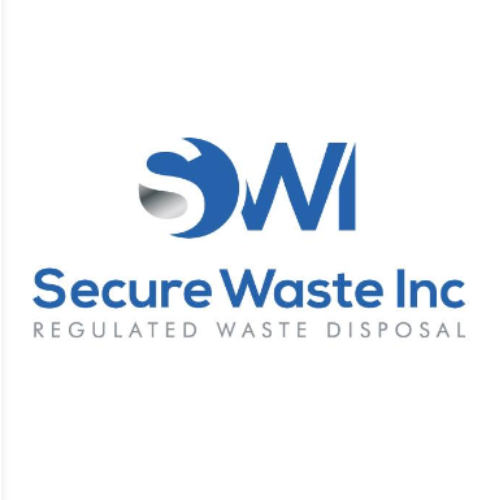
Expert Medical Waste Management: With over 25 years of industry experience, Secure Waste is a trusted local leader in hazardous and biohazardous waste disposal across Maryland, Virginia, and Washington, D.C. Specializing in medical waste management, sharps needle disposal, and biohazard waste removal, the company ensures full compliance with federal, state, and local regulations while prioritizing environmental sustainability.
The company also offers additional services, including secure document shredding and sharps container sales, providing comprehensive solutions for healthcare facilities and businesses. Our cost-effective services help clients maintain regulatory compliance without unexpected costs.
With a commitment to customer satisfaction, Secure Waste offers tailored waste management plans that align with industry best practices. Their team of experts provides reliable, timely, and compliant services, making them the preferred choice for medical waste disposal. For a free waste quote or more information, visit www.securewaste.net
